
The gravity field tells us whether massive matters are included or not under the soil. Information of the evolution of the Moon will be obtained by measuring the distribution of gravity fields.
RSAT(Relay SATellite)
Four-way Doppler measurements of Main Orbiter by using Relay Satellite for far-side gravity field for the first time.
VRAD(VLBI RADio source)
Orbits of the sub-satellites are precisely determined by tracking the radio sources onboard sub-satellites with differential VLBI, which contributes the accuracy of the gravity field, especially on the lunar limb areas.
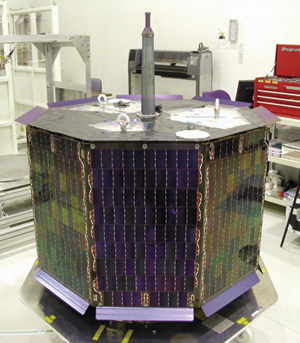
| Dimension | 1m x 1m x 0.65m |
|---|---|
| Mass | 45kg |
| Power | 70W |
The configurations of satellites and antennas
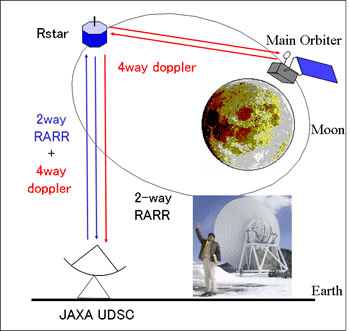
RSAT: 4way Doppler measurement by Relay satellite
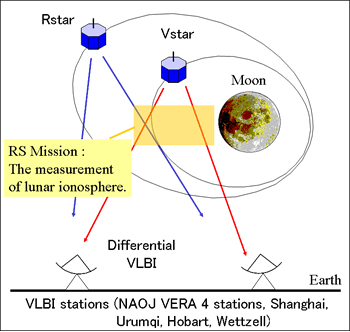
VRAD: Differential VLBI observation of radio sources
RS: Observation of the lunar ionosphere
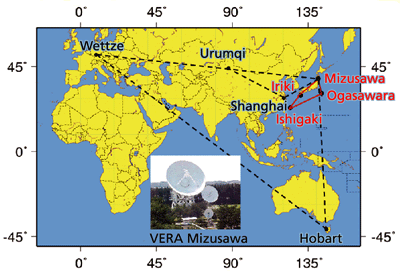
ground stations
Doppler measurements of the lunar far-side have not been done. RSAT overcomes this difficulty by using a relay satellite. The figure shows the improvement of selenoid height error with RSAT 4way observation.

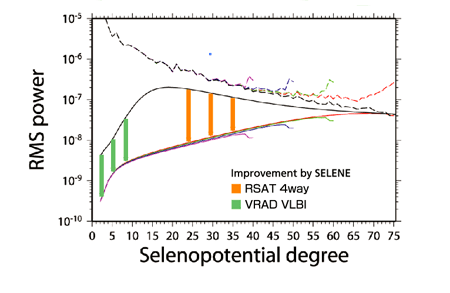
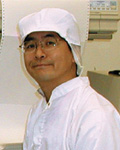
Noriyuki Namiki
Department of Earth and Planetary Sciences,
School of Sciences, Kyushu Univ.

Hideo Hanada
RISE (Research In Selenodesy) Project,
National Astronomical Observatory of Japan